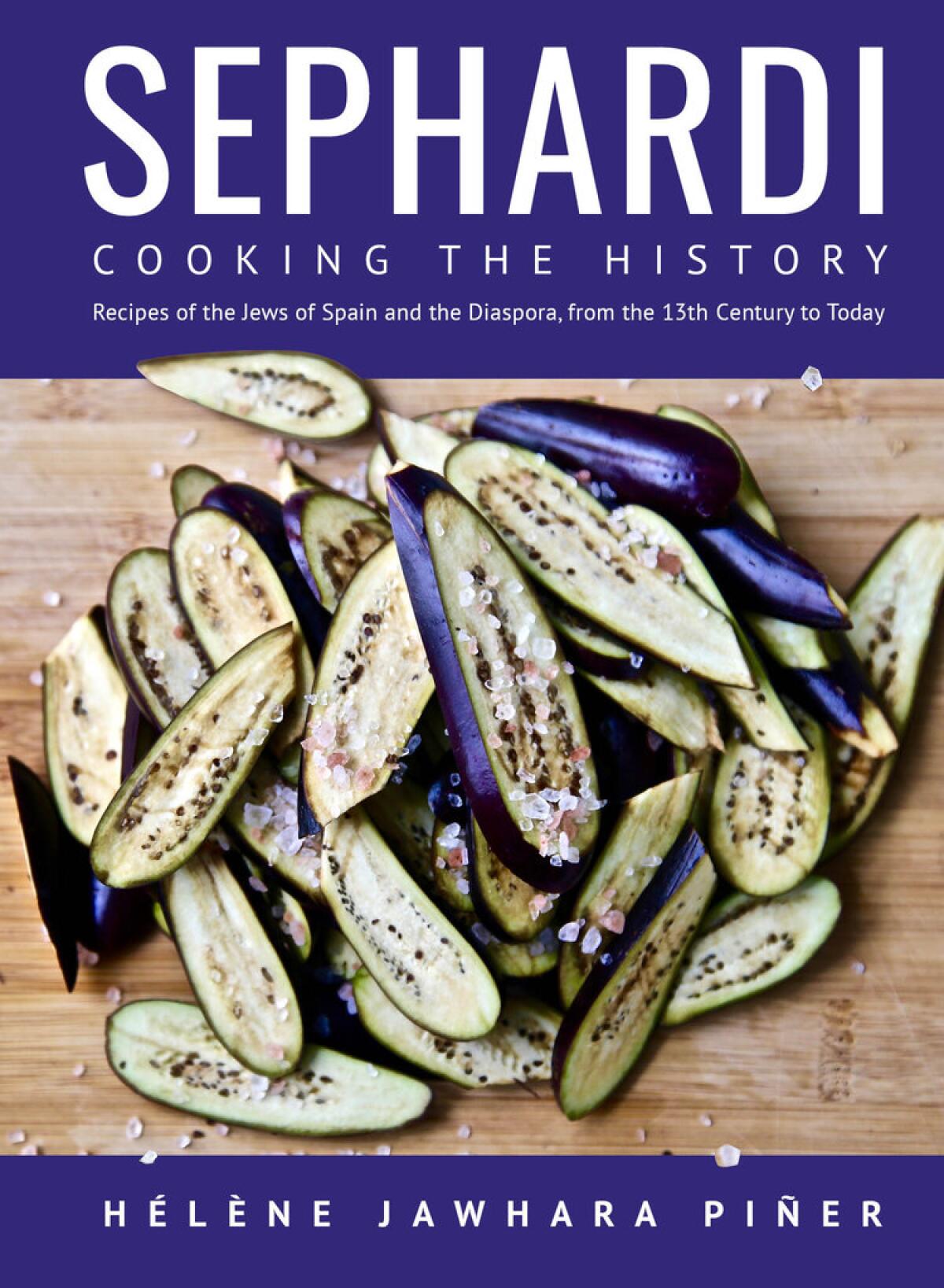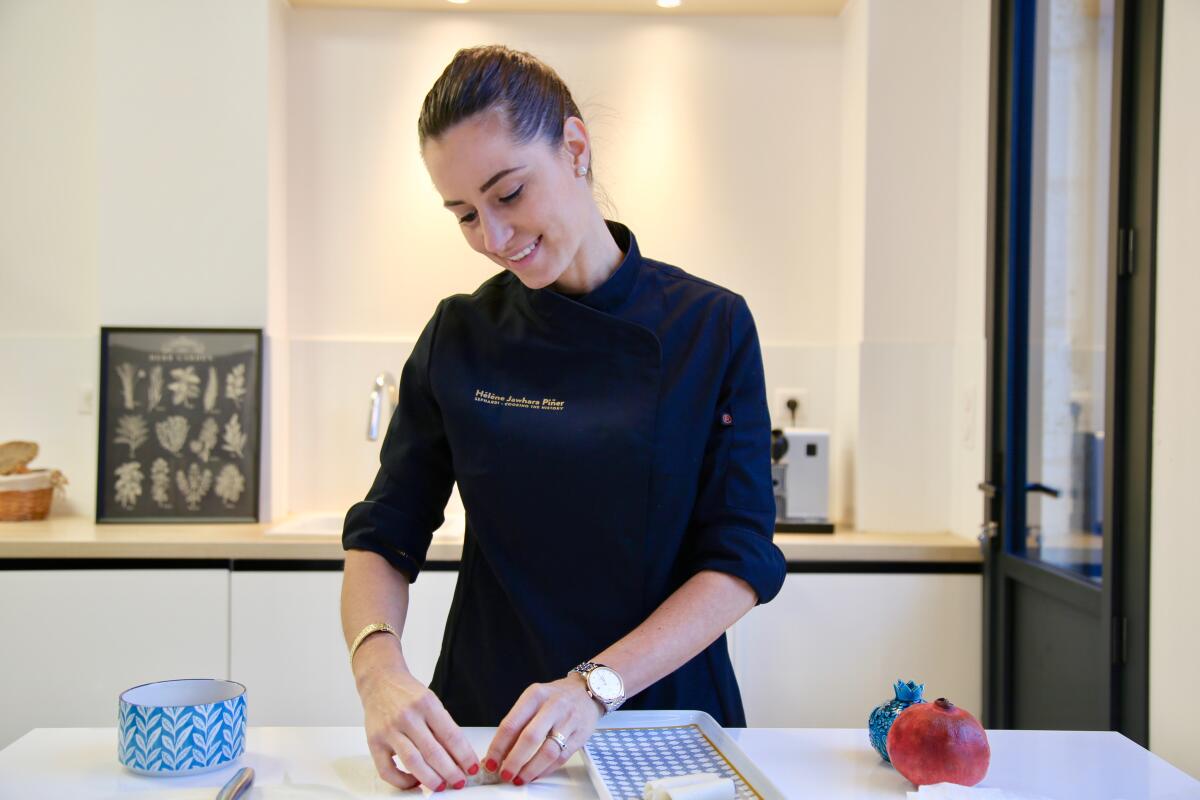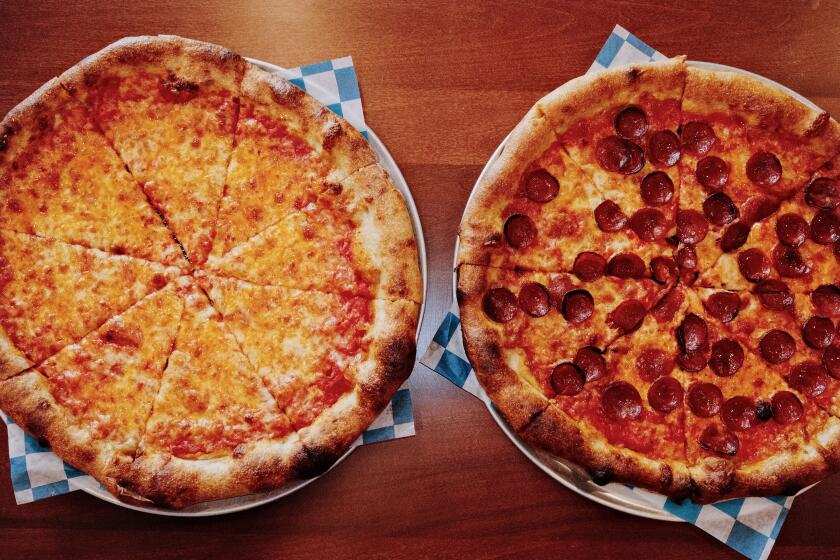A new Jewish cookbook that everyone should own, just in time for the High Holy Days

My first Jewish cookbook was Joan Nathan’s “Jewish Holiday Kitchen,” and it became my kitchen bible while I was living in Israel from 1983 to 1991. It covered not just the food of Jewish holidays but also history and cuisine from countries around the world. It informed me of a vast Jewish culinary heritage and gave recipes for every Jewish occasion. I came to understand that there was a lot more to Jewish food than the matzo ball soup and gefilte fish of my youth, and I wanted to learn all about it.
With the coming Jewish High Holy Days, starting with Rosh Hashanah at sundown on Sept. 6 and ending Sept. 29 with the conclusion of Simchat Torah, I am immersed in the small trove of recipes that I have curated especially for this time of year. Many of them come from now-tattered cookbooks that fill my bookshelves.
From Edda Servi Machlin’s “The Classic Cuisine of the Italian Jews,” I learned about Italian Jewish foods such as carciofi alla Giudia (deep-fried artichokes that look like a crispy chrysanthemum) and polpette di pollo e matzo (chicken-matzo meatballs). I learned about Sephardic cookery from Copeland Marks’ tome “Sephardic Cooking,” and found recipes for dishes I had eaten in Israel like Yemenite jachnoon (baked bread-like rolls with whole eggs), borekas (savory pastries filled with cheese, spinach or potatoes) and koobeh (stuffed dumplings). I also learned about Middle Eastern cuisine from Claudia Roden’s “A Book of Middle Eastern Food.”
Over the years, more of Roden’s and Nathan’s Jewish food books found their way to my bookshelves, as did Joyce Goldstein’s “Cucina Ebraica,” where I found recipes for spinaci con pinoli e passerine (spinach with pine nuts and raisins), fritelle di zucca (squash fritters from the Veneto) and peperoni ripieni (peppers stuffed with eggplant), and her “Sephardic Flavors,” from which I still make gayna al orno (roast chicken with apples and pomegranate).
More recently, Leah Koenig’s “The Jewish Cookbook” has a beautiful jeweled rice dish, studded with dried fruits, pistachios and pomegranate seeds, and a roast chicken with honey and thyme that is as simple as it is delicious and works for holiday and everyday meals alike.
I swore off bringing home new Jewish cookbooks — and cookbooks in general — because my bookshelves were overflowing and I didn’t feel like passing off new books as furniture or an art installation.
But I was unable to resist reading about them, and I’ve been intrigued by Hélène Jawhara Piñer’s “Sephardi: Cooking the History, Recipes of the Jews of Spain and the Diaspora, from the 13th Century to Today,” published in June. The recipes are gleaned from the history of the people of Spain, from court testimony given during the Spanish Inquisition and from Arabic and Catalan cookbooks dating back to the Middle Ages. Piñer holds a PhD in medieval and culinary history from the French University of Tours. “Sephardi” is the culmination of five years of academic research into medieval Spanish, Muslim, Christian and Jewish culinary history.

The recipes in “Sephardi” reflect the lush and multifaceted culinary traditions of the Iberian Peninsula, influenced by Celtic, Iberian, Roman-Mediterranean, Germanic and North African flavors and techniques. Many of the recipes are the first recorded versions of dishes that are still made today — peot (challah), adefina (Sabbath stew), puchero (chicken soup) and even matzo — albeit with some modernized techniques.
While Piñer has adapted the recipes for modern cooks of all levels, she was intent on remaining as true as possible to how they looked and tasted in the times in which the dishes were originally created. She chose not to include ingredients such as tomatoes and chiles (introduced from Latin America in the 16th century and only regularly consumed on the Iberian peninsula a century later), which are used abundantly in modern versions of these dishes that have been passed down in families for generations.
Piñer shows us how, during the Inquisition, the testimony of servants and merchants often was used as proof that a converso (a Jew who converted to Catholicism) was still participating in Jewish practices. Among the culinary behaviors often reported to authorities were the use of particular ingredients and cooking techniques as well as the frequency and timing with which specific dishes were eaten. For example, keeping the cooking staff from cooking on Fridays and Saturdays — giving them the days off instead — leaving a pot of stew every Friday afternoon to cook until Saturday morning, and eating red eggs on Fridays during Lent were interpreted by non-Jewish onlookers as indicators of ongoing Jewish practice.
As one would expect, the book offers chapters for basic meal components like bread and snacks, soups, meat and fish and desserts and pastries. There is also a chapter dedicated solely to eggplant, one for explicitly Jewish recipes cited in her research, and one devoted to recipes from “Regimen of Health,” a treatise on hygiene written by Moshe Ben Maimon (1135-1204) also known as Maimonides and by the acronym RaMBaM, considered by many the greatest Jewish philosopher and scholar of the Middle Ages. (His stipulations and recipes for a healthy diet could have been written by health food gurus of today.)
In the final chapter, Piñer, a trained culinarian in her own right, has developed original recipes based on the historical sources and other recipes in the book. While they are her modern creations, here too the recipes are true to their time in terms of ingredients and methodology.
So, despite the moratorium, I have yet another Jewish cookbook on my shelf. There is plenty of fodder for my ever-growing repertoire of fare for the High Holy Days. I’m already addicted to Maimonides’ quince, pear, apple and pomegranate elixir. And, if for no reason other than the titillating name, I will have to add “meatballs cursed by the Jews” to my recipe box as well. They are a little salty for my taste but otherwise flavorful and simple to make. There is no indication of how they came by the name, but that just makes for better conversation.
More to Read
Eat your way across L.A.
Get our weekly Tasting Notes newsletter for reviews, news and more.
You may occasionally receive promotional content from the Los Angeles Times.











